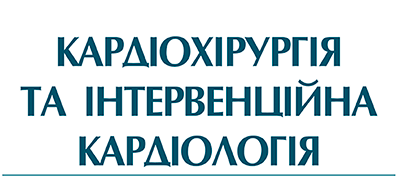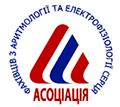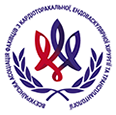Experience of implantation of the left ventricular electrode by means of interventricular septum puncture for resynchronization therapy in a patient with heart failure
B.B. Kravchuk, Yu.І. Karpenko, M.M. Petkanych, O.Z. Paratsii, A.V. Yakushev, R.G. Malyarchuk, V.V. Shapovalova, M.M. Sichik
References
1. Leyva F, Nisam S, Auricchio A. 20 Years of Cardiac Resynchronization Therapy. J. Amer. Coll. Cardiology. 2014;64(10):1047-1058. doi: 10.1016/j.jacc.2014.06.1178.
2. Bristow MR, Saxon LA, Boehmer J. et al, for the Comparison of Medical Therapy, Pacing and Defibrillation in Heart Failure (COMPANION) Investigators Cardiac resynchronization therapy with or without an implantable defibrillator in advanced heart failure. New Engl. J. Med. 2004;350:2140-2150. doi: 10.1056/NEJMoa032423.
3. Cleland JG, Daubert JC, Erdmann E. et al, for the Cardiac Resynchronization-Heart Failure (CARE-HF) study investigators The effect of cardiac resynchronization on morbidity and mortality in heart failure. New Engl. J. Med. 2005;352:1539-1549. doi: 10.1056/NEJMoa050496.
4. Chatterjee NA, Singh JP. Cardiac Resynchronization Therapy: Past, Present, and Future. Heart Failure Clin. 2015;11:287-303. doi: 10.1016/j.hfc.2014.12.007.
5. Abraham WT, Fisher WG, Smith AL. et al. Cardiac Resynchronization in Chronic Heart Failure. New Engl. J. Med. 2002;346:1845-1853. DOI: 10.1056/NEJMoa013168.
6. Özcan EE, Ozturk A, Ozel E. The impact of the left ventricular pacing polarity and localization during cardiac resynchronization therapy on depolarization and repolarization parameters. Anatol. J. Cardiol. 2018;19:00-00. doi: 10.1016/j.jacc.2013.05.092.
7. Ponikowski P, Voors AA, Anker SD. et al. 2016 esc guidelines for the diagnosis and treatment of acute and chronic heart failure: The task force for the diagnosis and treatment of acute and chronic heart failure of the European Society of Cardiology (ESC) developed with the special contribution of the heart failure association (HFA) of the ESC. Eur. Heart J. 2016;37:2129-2200. doi: 10.1093/eurheartj/ehw128.
8. Barbero U, Budano C, Golzio PG. et al. Combining electromagnetic navigation and 3-d mapping to reduce fluoroscopy time and achieve optimal CRT response. Pacing Clin. Electrophysiol. 2017;4. doi: 10.1111/pace.13209.
9. Moss AJ, Hall WJ, Cannom DS. et al. Cardiac-resynchronization therapy for the prevention of heart-failure events. New Engl. J. Med. 2009;361:1329-1338. doi: 10.1056/NEJMoa0906431.
10. Yuksel FErD, Hellmich M, Gassanov N. Comparison of conventional versus steerable-catheter guided coronary sinus lead positioning in patients undergoing cardiac resynchronization device implantation. PLoS One. 2015;10:e0143292. doi: 10.1371/journal.pone.0143292.
11. Tang AS, Wells GA, Talajic M. et al. Cardiac-resynchronization therapy for mild-to-moderate heart failure. New Engl. J. Med. 2010;363:2385-2395. doi: 10.1056/NEJMoa1009540.
12. Simantirakis EN, Papakonstantinou PE. Left ventricular lead implantation in cardiac resynchronization therapy (CRT): A challenging procedure. Hellenic J. Cardiology. 2018. Available online: https://doi.org/10.1016/j.hjc.2018.02.011.
13. Gamble JHP, Herring N, Ginks MR. et al. Endocardial left ventricular pacing across the interventricular septum for cardiac resynchronization therapy: Clinical results of a pilot study. https://doi.org/10.1016/j.hrthm.2018.02.032.
| [PDF] | [Contents] |








